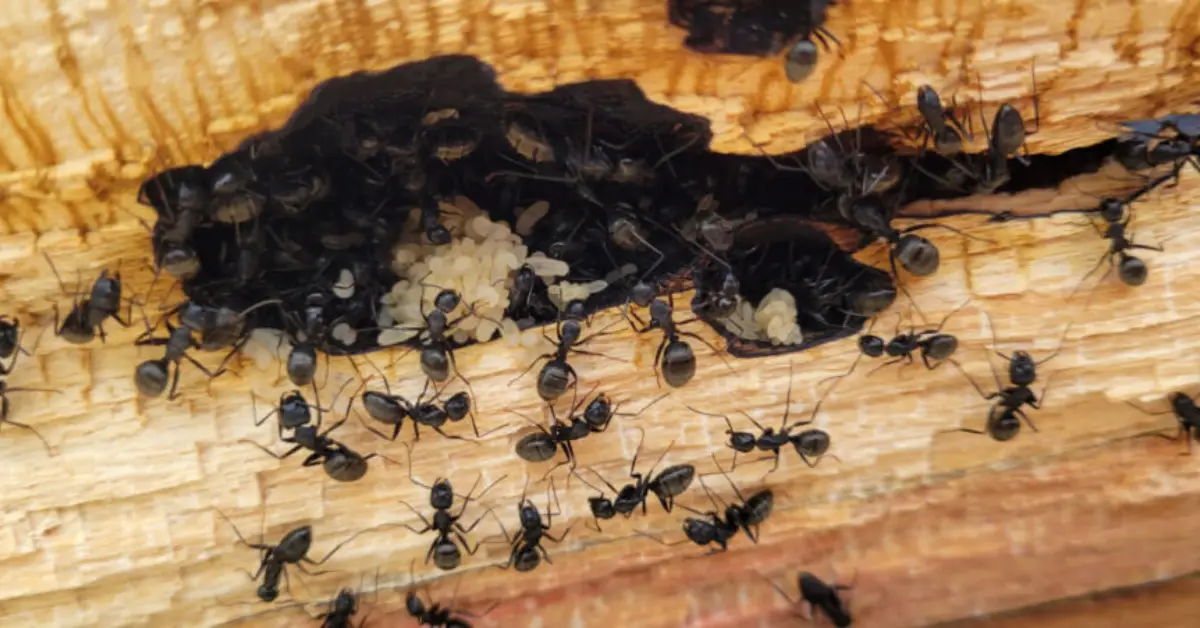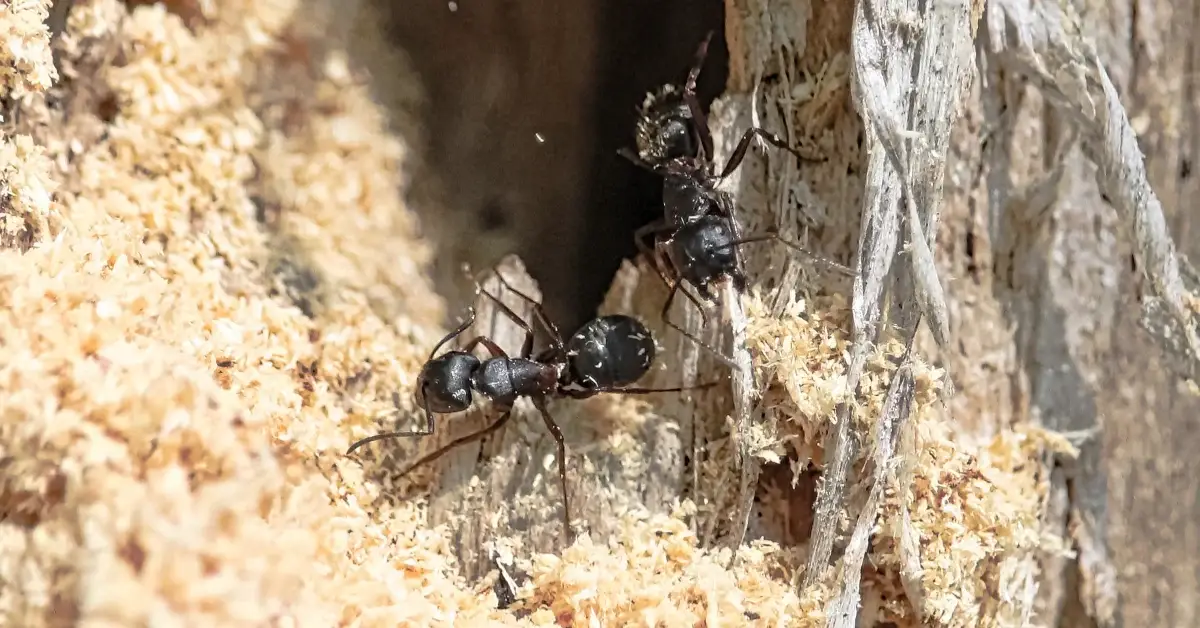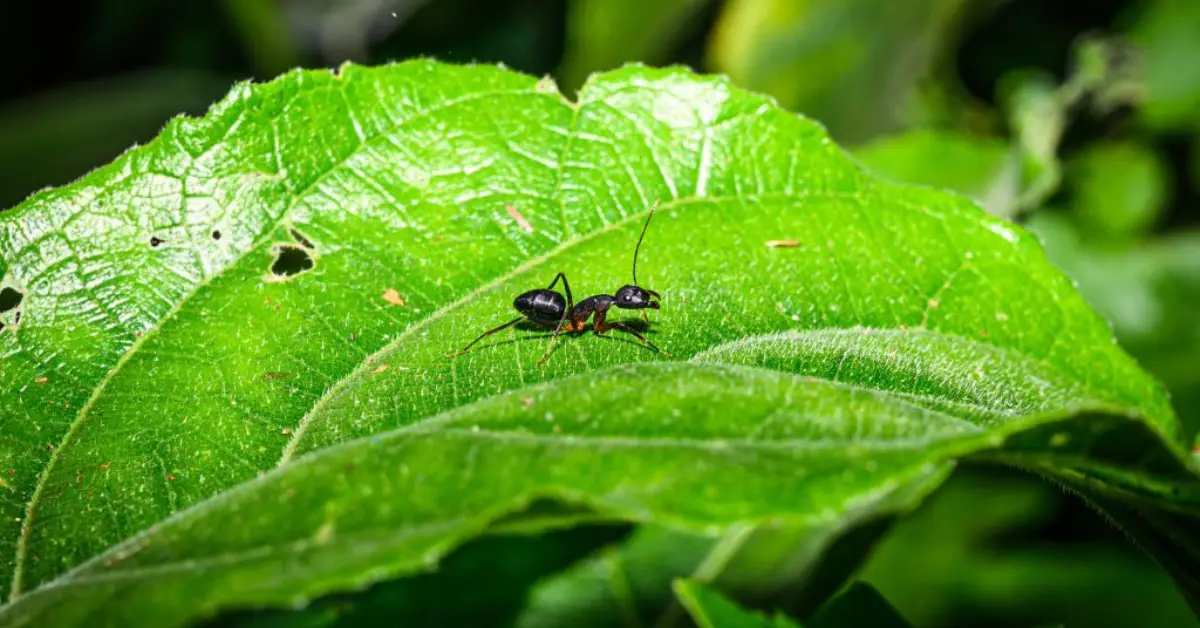10 Eco-Friendly Tricks Homeowners Swear by to Control Carpenter Ants
Every homeowner knows that moment — you’re sipping your morning coffee, and suddenly, a line of carpenter ants appears along the window frame like they own the place. I’ve been there too. And the first thought that hits you is usually, “Do I really need to spray chemicals inside my home just to get rid of them?”
The truth is, carpenter ants are not just another household pest — they’re quiet destroyers that slowly hollow out your wooden spaces, sometimes without you noticing for months. But here’s the good news: you can stop them naturally. No harsh fumes, no toxic residues, and no guilt about harming your garden or indoor air quality.
In this guide, I’ll walk you through ten proven, natural ways to get rid of carpenter ants — methods I’ve tested and cross-checked. You’ll also learn why they invade, what attracts them, and how simple things like fixing moisture or using the right soil mix can keep them away for good.
Before we dive into the natural solutions, tell me — have you ever tried getting rid of carpenter ants without chemicals? What worked (or didn’t) for you?
Why You’re Seeing Carpenter Ants Indoors
If you’ve spotted large black ants wandering around your kitchen counter or along your deck railings, you’re probably wondering, “Why are they in my house in the first place?” I’ve asked myself that question too — and the answer almost always comes down to moisture and decaying wood.
Carpenter ants don’t actually eat wood; they tunnel through it to make their nests. They’re drawn to damp, softened areas — the kind you find near leaky windows, under sinks, or around decks that stay wet after rain. If you’ve got loamy soil near your foundation or garden beds that retain moisture, that’s an open invitation. These ants love loam because it’s soft, breathable, and easy to dig through, making it the perfect place to build colonies close to your home.
Here’s what I always suggest checking when you start seeing them inside:
- Window sills and door frames – especially where condensation forms.
- Deck posts and outdoor furniture – moisture + wood = prime nesting zone.
- Planters and garden mulch beds – ants often start outside and work inward.
- Basement corners and crawl spaces – the quiet, damp spots no one checks.
Once you notice sawdust-like shavings (called frass) or faint rustling in wood, it’s time to act. According to The Spruce, early inspection makes a big difference — catching ants before they create deep tunnels can save you major repair costs later.
How to Identify a Carpenter Ant Infestation

Before you reach for any remedies, it’s important to be sure you’re dealing with carpenter ants — not termites or small sugar ants that show up near sweets. Misidentifying them can waste time and make the problem worse.
Here’s how I usually tell them apart:
- Winged ants near windows or lights – often swarm during warmer months.
- Small piles of wood dust (frass) – you might find this below beams or baseboards.
- Soft rustling sounds inside walls – their activity can sometimes be heard at night.
- Physical features: carpenter ants have a narrow waist, bent antennae, and a shiny, black or reddish body, unlike the straight-bodied termite.
When you understand where and why these ants set up camp, you can tackle the root cause instead of just the surface problem. And trust me, once you fix the moisture issues and clean out those soft spots, half the battle is already won.
Natural Ingredients That Deter Carpenter Ants
If you’re like me, you probably don’t love the idea of spraying harsh chemicals around your kitchen or garden just to keep ants away. The good news? You can use natural ingredients that are already sitting in your pantry or essential oil drawer — and they actually work. These options don’t just repel carpenter ants; they keep your space smelling fresh and safe for kids, pets, and plants.
1. Essential Oils That Repel Ants Naturally
Essential oils are one of my favourite go-to solutions. Peppermint, tea tree, and cedarwood oil can quickly confuse and repel ants by masking their scent trails. Mix about 15 drops of any of these oils with a cup of water and spray it along baseboards, windows, and door frames.
What I’ve learned from Cedarcide’s guide is that cedar oil, in particular, does more than just repel — it interferes with ants’ ability to detect pheromones, which they rely on to navigate. Spray every two to three days, especially after cleaning, to keep the scent barrier strong.
2. Vinegar and Lemon Juice Cleaning Solution
If you’ve ever watched ants march in a perfect line, that’s because they follow invisible chemical trails left by their colony. Vinegar and lemon juice break down those trails instantly. I usually mix equal parts vinegar and water in a spray bottle, add a few drops of lemon juice, and wipe down countertops and entry points daily.
It’s a simple, chemical-free cleaner that keeps your kitchen smelling citrus-fresh and stops ants from returning to the same route. Plus, it’s safe enough to use around food prep areas — a win for any household trying to stay natural.
If you’re already using vinegar and essential oils for ant control, you’ll probably love our guide on how to keep your home stink bug-free with 10 simple natural methods — it follows the same gentle, eco-safe approach that actually works.
3. Cinnamon and Clove Barrier Trick
Here’s a little-known trick that feels more like a home fragrance hack than pest control: ground cinnamon and clove powder. Sprinkle it along doorways, window sills, or wherever ants tend to sneak in. Both spices release strong oils that ants find overwhelming.
Target the Source, Not Just the Trail

Most people stop at wiping surfaces or spraying deterrents, but carpenter ants are smart survivors. If you don’t address where they’re nesting, they’ll simply relocate and come back. Let’s dig into how to find and fix the real problem.
4. Locate the Nest Through Sound or Damage Signs
Carpenter ants are surprisingly loud if you know what to listen for. Tap lightly on wooden beams, window frames, or outdoor logs — if you hear a hollow echo, that’s a clue. You can also press your ear against the wall at night; faint rustling often gives them away.
Outdoors, grab a flashlight and check loam soil and mulch zones near your foundation or garden beds. These soft, moisture-rich spots are where ants love to start their tunnels. Gently disturb the area to look for movement or small piles of sawdust.
5. Remove Decaying Wood & Moisture Sources
Once you’ve found where they’re nesting, go straight for their comfort zone — moisture. Replace rotted deck boards, fix leaky faucets, and keep gutters clean. If the soil near your house stays soggy, improve drainage or add a layer of gravel beneath your loam mix to help it dry faster.
Healthy, balanced loam soil supports your plants and reduces the dampness that ants crave. When your home’s foundation and garden stay dry, you cut off the very conditions that make carpenter ants settle in the first place.
By focusing on the source instead of just the symptoms, you’ll see fewer ants, fewer repairs, and a home that feels fresher and safer — naturally.
Natural Baits and Barriers That Work
Once you’ve tackled surface-level cleaning, it’s time to deal with the colony itself. From my experience, the most effective natural approach combines simple homemade baits and physical barriers that ants can’t cross. These methods don’t just chase them away — they actually interrupt their life cycle.
6. Borax + Sugar Mixture (Low-tox, Still Natural)
Here’s a tried-and-true solution that generations of homeowners have used: the borax and sugar mix. It’s low in toxicity and highly effective when done right. Mix 1 part borax with 3 parts sugar, then dissolve it in warm water to make a syrupy bait. You can also sprinkle the dry version on small pieces of cardboard.
Place the bait near ant trails — behind the refrigerator, under sinks, or near windows. Be careful to keep it away from children and pets, since borax can irritate skin or cause stomach upset if ingested.
The sugar lures the ants, and the borax slowly dehydrates their digestive system, eliminating the colony from within. It takes patience, but it’s one of the most natural long-term fixes I’ve ever tried.
For pet-safe pest management that doesn’t rely on expensive store-bought sprays, check out our full guide on 10 easy ways to get rid of fleas in your home without expensive sprays — it pairs perfectly with these homemade bait strategies.
7. Diatomaceous Earth (Food Grade)
If you want something even safer for pets and plants, food-grade diatomaceous earth (DE) is your best friend. It’s a fine powder made from fossilized algae that works mechanically, not chemically — it dries out the ants’ exoskeletons on contact.
Sprinkle it:
- Along walls and baseboards where you see ant trails.
- Around planters and soil beds near your garden’s edge.
- In cracks or crevices where moisture builds up.
Plants That Naturally Repel Carpenter Ants

I’m a big believer in using plants not just for decoration but for protection too. Certain herbs and flowers naturally emit scents that carpenter ants can’t stand — making your garden and patio a living barrier.
8. Best Repellent Plants for Home Gardens
The best ant-repelling plants I’ve seen in action are mint, lavender, marigold, tansy, and basil. These plants release strong essential oils that disorient ants and mask their pheromone trails.
Here’s how you can use them:
- Mint or basil near doorways and window boxes.
- Lavender and marigolds around your patio or garden edges.
- Tansy planted close to foundations or deck perimeters.
Healthy, balanced soil — especially loam soil — helps these plants thrive. Loam provides proper drainage, keeping moisture levels low and discouraging ants from nesting beneath. If you’re curious about improving your garden soil mix, you can explore more about it in this guide on loam soil for plants.
It’s a win-win: beautiful greenery and a natural pest defense system working year-round.
Eco-Friendly Preventive Maintenance Habits
The most overlooked part of pest control is maintenance. You can repel ants for a while, but if your home and yard stay attractive to them, they’ll eventually come back. Prevention is what keeps your efforts from going to waste.
9. Yard Hygiene Checklist
I always tell readers: think like an ant. They love hidden, damp, and undisturbed spaces. Keeping your yard neat can make all the difference.
Here’s a quick checklist to keep ants out for good:
- Trim shrubs and tree branches that touch your house.
- Rake leaves and debris regularly.
- Keep mulch under two inches thick — thick mulch traps moisture.
- Store firewood at least 10 feet away from walls or fences.
These habits make your space less appealing, not just for carpenter ants but for other pests too.
10. Soil and Drainage Balance
Finally, let’s talk about the base of it all — your soil and drainage. I’ve noticed that homes surrounded by heavy, compacted soil or constantly wet areas tend to attract carpenter ants faster. Loam soil, which balances clay, silt, and sand, helps drain excess water while keeping your garden healthy.
Use small gravel channels or raised beds if your yard tends to stay wet. Proper soil management keeps your foundation dry, your plants happy, and those ants looking elsewhere for a home.
And if you’re focusing on long-term pest prevention, our article on 10 DIY methods for roach-free living — no chemicals required shares more simple upkeep tips that keep your home pest-proof year-round.
When you combine these simple, natural habits with a little consistency, you don’t just get rid of carpenter ants — you build an environment where they can’t thrive again.
When to Call a Professional (and What to Expect)
Sometimes, no matter how many natural methods you try, the ants just won’t quit. I’ve seen this happen when the colony is deep inside a wall or when the infestation spreads to structural beams or roof supports. If you notice persistent rustling, hollow wood sounds, or damage to door frames and decks even after weeks of treatment, it’s time to bring in a professional.
When you do, look for eco-certified pest control companies — many are trained in using low-impact solutions that won’t harm your home’s air quality or garden soil. Beyond Pesticides maintains a national list of service providers who specialize in environmentally responsible pest management, so you can get help without compromising your values.
Professional teams often start with moisture readings, infrared inspections, and targeted removal rather than blanket spraying. That means you’ll fix the root of the problem, not just silence it temporarily. Think of it as protecting your home’s structure and your health at the same time.
Key Takeaways — Natural, Safe, and Sustainable Pest Control
Getting rid of carpenter ants doesn’t have to mean filling your home with harsh chemicals. The best approach is steady, mindful, and preventive. Let’s recap what truly works:
- Use essential oils like peppermint, cedarwood, and tea tree to disrupt scent trails.
- Clean with vinegar and lemon juice to erase pheromone paths.
- Set natural baits such as the borax and sugar mix for colony control.
- Strengthen barriers with diatomaceous earth and clove or cinnamon powder.
- Grow repellent plants — mint, lavender, and basil are great natural defenders.
- Fix leaks, improve drainage, and maintain healthy loam soil to keep moisture (and ants) away.
The goal isn’t just to eliminate ants; it’s to create an environment that naturally discourages them — one where balance, soil health, and clean surroundings protect both your home and your garden.
If you’d like to explore more natural home improvement and maintenance tips, visit Build Like New — where we share expert-backed ways to protect and renew your living space sustainably.
Before you go, I’d love to hear from you: Have you tried any natural ant-control tricks that actually worked for you? Share your experiences or home-tested tips in the comments below — your story might help someone else build a pest-free home, naturally.
Disclaimer: The information in this article is for general educational purposes only and should not replace professional pest control advice. Always follow product safety labels and consult a certified expert if the infestation is severe or structural damage is suspected.


